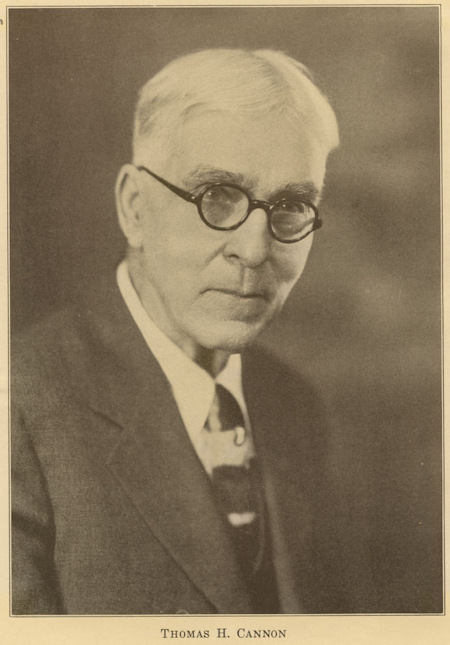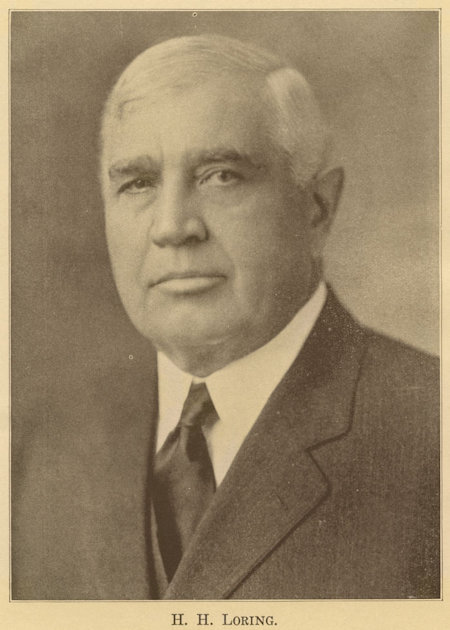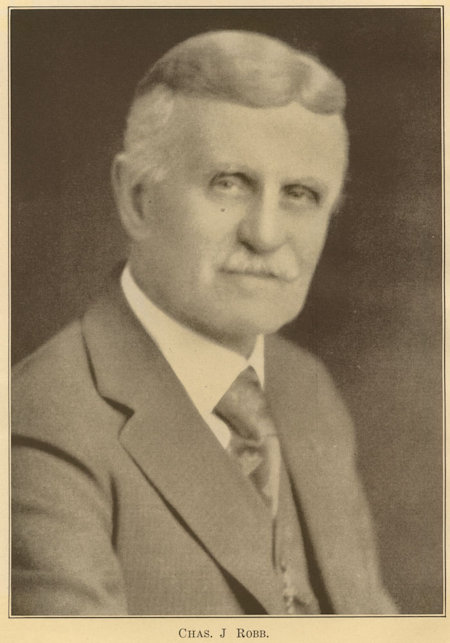History of Lake, Porter, and LaPorte, 1927County history published by the Historians' Association . . . .
Source Citation:
Cannon, Thomas H., H. H. Loring, and Charles J. Robb. 1927.
History of
the Lake and Calumet Region of Indiana, Embracing the Counties of Lake,
Porter and LaPorte: An Historical Account of Its People and Its Progress
from the Earliest Times to the Present.
Volume I. Indianapolis, Indiana: Historians' Association. 840 p.
HISTORY OF THE LAKE AND CALUMET REGION OF INDIANA
iii
FOREWARDHistory's office, it is said, is to make the past intelligible to the present for the guidance of future generations. It is this and more. To live, to achieve, and to record; and who would wish to live without achieving, and who would wish to achieve and leave a void where that record belongs, the inherent right of unborn generations. Objective truth speaks in its own behalf. The concrete evidence of performance proclaims the deed. Pyramids, obelisks, and ivy-grown walls are mute heralds of man's greatness in ages dead. Yet these monuments are mere obituaries, feeble suggestions of the glorious lives, sublime thoughts, and noble inspiration that dedicated themselves to the unfoldment of the magnificent civilizations of other ages. Could we weave the entire story from these mute, musty walls we then would know in fullness that man’s works are but pigmy fragments of the entire story.
Thus in this published work it is hoped to present for future generations the panorama in fullness. We live in the golden period of man’s greatness, for here in Indiana may be seen the present culmination of man's contribution down through the ages. From the crude crucibles of the ancients to these belching furnaces that illumine Gary’s horizon is a story of unsurpassed interest. The crucibles of the ancients made possible armor, fine swords, and other utilities of warfare, but these monster crucibles at Gary make possible a million uses, for this is the age of metal and the future greatness of this, our great region, is founded on metal. Rich in history, rich in traditions, and overwhelming in accomplishment, the Lake and Calumet region of Indiana has a suitable historical background. The Indian period is stirring and romantic and ever as their shadows disappeared over the horizon came the whites -- conquerors, trappers, traders, and then the settlements, and eventually organized society.
We sincerely trust we have made an able presentation in these volumes of all the elements that rightfully belong to the story. And in these collective elements is the story, for one epoch is builded upon another even as links form a chain. The entire fabric is the soul, and the finest expression of that soul is the wonderful present. On every hand are objective truths and behind these -- back through the years -- is the soul, ever onward -- ever upward -- and yet still through the years to come, onward. So these volumes are dedicated to those who are to follow, and to them we bequeath the tale of their forebears -- for their guidance.
Thomas H. Cannon
iv

v
Not alone do men fall as the leaf but events fade from the freshness of memory, and how true is this when one reaches the mellow period of life and retrospectively gazes through the years of the past. Old friends have gone, and old scenes have changed. Those persons and things that we would fondly treasure and keep with us always have succumbed to the law of life and given way to transition, and thus we find ourselves moving on with the ever-hurrying procession of life with only now and then time to snatch a little longing and a little loving for the friends and the places of bygone days. It therefore becomes increasingly necessary to commit in writing the story of the various units of our civilization -- their pathos, tragedy, accomplishments, and hopes -- and it is eminently necessary that the present generation and those to come shall feel a pertinent necessity of continuing to record the story of their achievements.
We are but a reflection of all that has gone before and surely a definite knowledge of those persons and things that have contributed to our present attainment must be regarded as priceless, for it is only through an intimate knowledge of the past that we are enabled to build well for the future. This published work is of a region distinctive in makeup, mode of life, and psychological tendency. For here are gathered many races, and here may be seen at its best the fusion in what we are pleased to term the melting pot. To these various races there is the greatest latitude for expression and expansion, and here in its teeming industrial life they find that great measure of material security so necessary for the development and coalescence taking place. The hurry of the times and the very intensiveness of life in this region fills the present with such constructive activity that there is now little time for pause and retrospection. And as the ultimate growth must surely eclipse even our boldest anticipations, so too in that distant day of towering things may we hope that they of that time will have sufficient leisure to take stock of whence they came, and in that reflection find in these volumes a story of men and women who braved the wilderness when there was little promise and who in their own fine moral worth and character laid well the foundations for all that was builded upon them.
H. H. Loring
vi

vii
Some say that history is largely fiction agreed upon. 'Tis pitiably true that much history has been assembled on the theory of reasonable hypothesis. Even as the naturalist has been able to reconstruct the contour of a prehistoric animal from a few bones, so much of ancient history has been assembled from fragments and by obvious deduction. This being true, more is the need of public appreciation of all efforts in collecting historical facts. Certainly future generations should never excuse us if we, with our limitless facilities, are lax in this duty.
The present work is offered to its readers as a splendid foundation for all future efforts as pertains to this region. It represents much research and patient application. Many of the major phases were participated in by those who yet live, so on the whole the work is fortunate in being timely. What would otherwise go by default and become mere tradition is now in print and is authoritative. Parts of our region as organized society are comparatively old, yet the region as a whole is young; we have not yet passed the formative period, so most of the stupendous things are yet to come. If we of today are not alive in that great period to come, it still would be pardonable if we felt a secret pride in having laid well the foundations for the future edifice. And who would be bold enough to limit in vision the proportions of that edifice of the future? The intensive ferment of today coincident with present day achievement, I f eel, assures the supremacy of that part of Indiana covered in this work, and no doubt this region will quite naturally grow into a distinctive geographical entity known as the Lake Region of Indiana but more particularly will be known, I f eel, as the most wonderful industrial region in the history of the world.
It has been a special privilege, indeed, to have participated in the erection of this historical work covering all periods from the Indian and pioneer phases to the absorbing present.
Chas J. Robb
viii

NAVIGATION OF
HISTORY OF THE LAKE AND CALUMET REGION OF INDIANA
FOREWARD
AN APPRECIATION
CONTENTS
CHAPTER I - Geology and Topography
CHAPTER II - The Mound Builders
CHAPTER III - Days of Indian Occupancy
CHAPTER IV - Early Explorations
CHAPTER V - Border Warfare
CHAPTER VI - Lake and Calumet Region Becomes Part of United States
CHAPTER VII - After Wayne and Greenville - Tecumseh and the Prophet
CHAPTER VIII - Indian Peace
CHAPTER IX - Early Settlements and Pioneers - County Organization
CHAPTER X - Townships - Towns - Villages
CHAPTER XI - Pioneer Life
CHAPTER XII - The Lake Michigan Marshes
CHAPTER XIII - Agriculture and Livestock
CHAPTER XIV - Military Annals
CHAPTER XV - The Lake and Calumet Region in the World War
CHAPTER XVI - The Newspapers
CHAPTER XVII - The Medical Profession
CHAPTER XVIII - The Bench and Bar in the Lake and Calumet Region
CHAPTER XIX - Churches
CHAPTER XX - Schools
CHAPTER XXI - Libraries
CHAPTER XXII - Social Life
CHAPTER XXIII - The Dunes of Northwestern Indiana
CHAPTER XXIV - Banks and Banking
CHAPTER XXV - Transportation and Waterways
CHAPTER XXVI - Cities
CHAPTER XXVII - Industrial Development
CHAPTER XXVIII - Chambers of Commerce
Transcribed by Steven R. Shook, December 2022